Related Research Articles
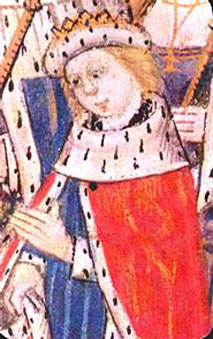
Edward V was de jure King of England from 9 April to 25 June 1483. He succeeded his father,Edward IV,upon the latter's death. Edward V was never crowned,and his brief reign was dominated by the influence of his uncle and Lord Protector,the Duke of Gloucester,who deposed him to reign as King Richard III;this was confirmed by the Act entitled Titulus Regius,which denounced any further claims through his father's heirs.

Edward IV was King of England from 4 March 1461 to 3 October 1470,then again from 11 April 1471 until his death in 1483. He was a central figure in the Wars of the Roses,a series of civil wars in England fought between the Yorkist and Lancastrian factions between 1455 and 1487.
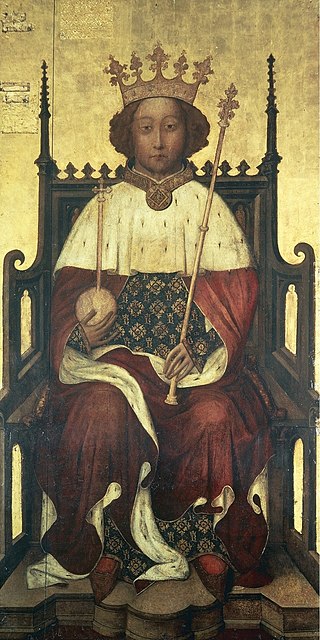
Richard II,also known as Richard of Bordeaux,was King of England from 1377 until he was deposed in 1399. He was the son of Edward the Black Prince,Prince of Wales,and Joan,Countess of Kent. Richard's father died in 1376,leaving Richard as heir apparent to his grandfather,King Edward III;upon the latter's death,the 10-year-old Richard succeeded to the throne.

Richard Neville,16th Earl of Warwick,known as Warwick the Kingmaker,was an English nobleman,administrator,and military commander. The eldest son of Richard Neville,5th Earl of Salisbury,he became Earl of Warwick through marriage,and was the wealthiest and most powerful English peer of his age,with political connections that went beyond the country's borders. One of the leaders in the Wars of the Roses,originally on the Yorkist side but later switching to the Lancastrian side,he was instrumental in the deposition of two kings,which led to his epithet of "Kingmaker".
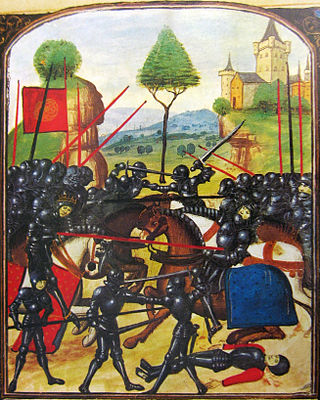
The Battle of Barnet was a decisive engagement in the Wars of the Roses,a dynastic conflict of 15th-century England. The military action,along with the subsequent Battle of Tewkesbury,secured the throne for Edward IV.

The Princes in the Tower refers to the mystery of the fate of the deposed King Edward V of England and his younger brother Richard of Shrewsbury,Duke of York,heirs to the throne of King Edward IV of England. The brothers were the only sons of the king by his queen,Elizabeth Woodville,living at the time of their father's death in 1483. Aged 12 and 9 years old,respectively,they were lodged in the Tower of London by their paternal uncle and England's regent,Richard,Duke of Gloucester,supposedly in preparation for Edward V's forthcoming coronation. Before the young king could be crowned,he and his brother were declared illegitimate. Gloucester ascended the throne as Richard III.

The House of Lancaster was a cadet branch of the royal House of Plantagenet. The first house was created when King Henry III of England created the Earldom of Lancaster—from which the house was named—for his second son Edmund Crouchback in 1267. Edmund had already been created Earl of Leicester in 1265 and was granted the lands and privileges of Simon de Montfort,6th Earl of Leicester,after de Montfort's death and attainder at the end of the Second Barons' War. When Edmund's son Thomas,2nd Earl of Lancaster,inherited his father-in-law's estates and title of Earl of Lincoln he became at a stroke the most powerful nobleman in England,with lands throughout the kingdom and the ability to raise vast private armies to wield power at national and local levels. This brought him—and Henry,his younger brother—into conflict with their cousin King Edward II,leading to Thomas's execution. Henry inherited Thomas's titles and he and his son,who was also called Henry,gave loyal service to Edward's son King Edward III.
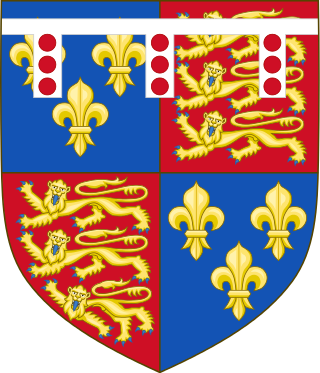
The House of York was a cadet branch of the English royal House of Plantagenet. Three of its members became kings of England in the late 15th century. The House of York descended in the male line from Edmund of Langley,1st Duke of York,the fourth surviving son of Edward III. In time,it also represented Edward III's senior line,when an heir of York married the heiress-descendant of Lionel,Duke of Clarence,Edward III's second surviving son. It is based on these descents that they claimed the English crown. Compared with its rival,the House of Lancaster,it had a superior claim to the throne of England according to cognatic primogeniture,but an inferior claim according to agnatic primogeniture. The reign of this dynasty ended with the death of Richard III of England at the Battle of Bosworth Field in 1485. It became extinct in the male line with the death of Edward Plantagenet,17th Earl of Warwick,in 1499.
Dominic Mancini was an Italian monk who visited England in 1482–3. He witnessed the events leading up to Richard III being offered the English crown. He left in 1483 and wrote a report of what he had witnessed. He called it:De Occupatione Regni Anglie per Riccardum Tercium. The account is a major source of information about the period,but it sat unread in a French library in Lille until rediscovered in 1934.

Humphrey Stafford,1st Duke of Buckingham,6th Earl of Stafford,7th Baron Stafford,of Stafford Castle in Staffordshire,was an English nobleman and a military commander in the Hundred Years' War and the Wars of the Roses. Through his mother he had royal descent from King Edward III,his great-grandfather,and from his father,he inherited,at an early age,the earldom of Stafford. By his marriage to a daughter of Ralph,Earl of Westmorland,Humphrey was related to the powerful Neville family and to many of the leading aristocratic houses of the time. He joined the English campaign in France with King Henry V in 1420 and following Henry V's death two years later he became a councillor for the new king,the nine-month-old Henry VI. Stafford acted as a peacemaker during the partisan,factional politics of the 1430s,when Humphrey,Duke of Gloucester,vied with Cardinal Beaufort for political supremacy. Stafford also took part in the eventual arrest of Gloucester in 1447.
John Neville,1st Marquess of Montagu was a major magnate of fifteenth-century England. He was a younger son of Richard Neville,5th Earl of Salisbury,and the younger brother of Richard Neville,Earl of Warwick,the "Kingmaker".
Henry Percy,2nd Earl of Northumberland was an English nobleman and military commander in the lead up to the Wars of the Roses. He was the son of Henry "Hotspur" Percy,and the grandson of Henry Percy,1st Earl of Northumberland. His father and grandfather were killed in different rebellions against Henry IV in 1403 and 1408 respectively,and the young Henry spent his minority in exile in Scotland. Only after the death of Henry IV in 1413 was he reconciled with the Crown,and in 1414 he was created Earl of Northumberland.

John Mowbray,3rd Duke of Norfolk,,Earl Marshal was a fifteenth-century English magnate who,despite having a relatively short political career,played a significant role in the early years of the Wars of the Roses. Mowbray was born in 1415,the only son and heir of John de Mowbray,2nd Duke of Norfolk,and Katherine Neville. He inherited his titles upon his father's death in 1432. As a minor he became a ward of King Henry VI and was placed under the protection of Humphrey,Duke of Gloucester,alongside whom Mowbray would later campaign in France. He seems to have had an unruly and rebellious youth. Although the details of his misconduct are unknown,they were severe enough for the King to place strictures upon him and separate him from his followers. Mowbray's early career was spent in the military,where he held the wartime office of Earl Marshal. Later he led the defence of England's possessions in Normandy during the Hundred Years' War. He fought in Calais in 1436,and during 1437–38 served as Warden of the Eastern March on the Anglo-Scottish border,before returning to Calais.

John de la Pole,2nd Duke of Suffolk,KG,was a major magnate in 15th-century England. He was the son of William de la Pole,1st Duke of Suffolk,and Alice Chaucer,the daughter of Thomas Chaucer. His youth was blighted,in 1450,by the political fall and subsequent murder of his father,who had been a favourite of the king,Henry VI,but was increasingly distrusted by the rest of the nobility. Although the first duke of Suffolk had made himself rich through trade and –particularly –royal grants,this source of income dried up on his death,so John de la Pole was among the poorest of English dukes on his accession to the title in 1463. This was a circumstance which John felt acutely;on more than one occasion,he refused to come to London due to his impoverishment being such that he could not afford the costs of maintaining a retinue.
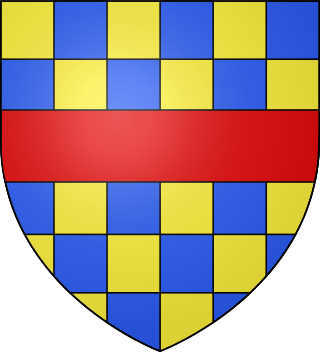
John Clifford,9th Baron Clifford,9th Lord of Skipton was a Lancastrian military leader during the Wars of the Roses in England. The Clifford family was one of the most prominent families among the northern English nobility of the fifteenth century,and by the marriages of his sisters,John Clifford had links to some very important families of the time,including the earls of Devon. He was orphaned at twenty years of age when his father was slain by partisans of the House of York at the first battle of the Wars of the Roses,the Battle of St Albans in 1455. It was probably as a result of his father's death there that Clifford became one of the strongest supporters of Margaret of Anjou,wife of King Henry VI,who ended up as effective leader of the Lancastrian faction.
Michael A. Hicks is an English historian,specialising in the history of late medieval England,in particular the Wars of the Roses,the nature of late medieval society,and the kings and nobility of the period.
Gerald Leslie Harriss FBA was an English historian of the Late Middle Ages. His work focused on the parliamentary,financial and administrative history of the period. Harriss was a Fellow of Magdalen College,Oxford.

William Ufford,2nd Earl of Suffolk was an English nobleman in the reigns of Edward III and Richard II. He was the son of Robert Ufford,who was created Earl of Suffolk by Edward III in 1337. William had three older brothers who all predeceased him,and in 1369 he succeeded his father.
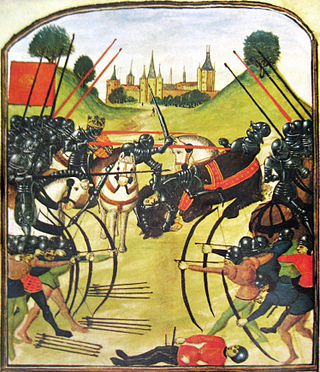
The Wars of the Roses (1455–1487),known at the time and for more than a century after as the Civil Wars,were a series of civil wars fought over control of the English throne in the mid- to late fifteenth century. These wars were fought between supporters of two rival cadet branches of the royal House of Plantagenet:Lancaster and York. The wars extinguished the last male line of the house of Lancaster in 1471,leading to the Tudor family inheriting the Lancastrian claim to the throne. Following the war and the extinction of the last male line of the house of York in 1483,a politically arranged marriage united the Houses of Tudor and York,creating a new royal dynasty which inherited the Yorkist claim as well,thereby resolving the conflict.

The Loveday of 1458 was a ritualistic reconciliation between warring factions of the English nobility that took place at St Paul's Cathedral on 25 March 1458. Following the outbreak of the Wars of the Roses in 1455,it was the culmination of lengthy negotiations initiated by King Henry VI to resolve the lords' rivalries. English politics had become increasingly factional during his reign,and was exacerbated in 1453 when he became catatonic. This effectively left the government leaderless,and eventually the King's cousin,and at the time heir to the throne,Richard,Duke of York,was appointed Protector during the King's illness. Alongside York were his allies from the politically and militarily powerful Neville family,led by Richard,Earl of Salisbury,and his eldest son,Richard,Earl of Warwick. When the King returned to health a year later,the protectorship ended but partisanship within the government did not.
References
- 1 2 3 4 5 "Obituary: John Armstrong". The Independent. 18 August 1994.
- 1 2 3 4 Allmand, C., 'C. A. J. Armstrong (1909–1994),' Renaissance Studies 9. (1995), 123–126
- ↑ "Richard III réenterré : un manuscrit de 1483, conservé à Lille, raconte son coup d'état". France 3 Hauts-de-France. 24 March 2015.
- ↑ "THE USURPATION OF RICHARD THE THIRD » 31 Jul 1936 » The Spectator Archive". The Spectator Archive.
- ↑ For example, G.L. Harriss: https://thehistoryofparliament.wordpress.com/2014/11/10/a-tribute-to-gerald-l-harriss-fba/
- ↑ Hicks, M.A., 'Propaganda and the First Battle of St Albans', Nottingham Medieval Studies 44 (2000), 168